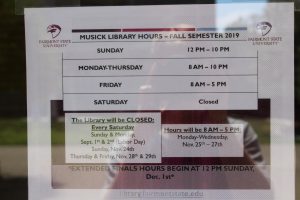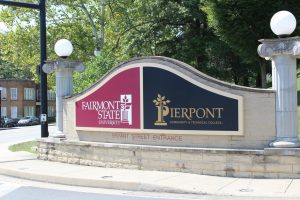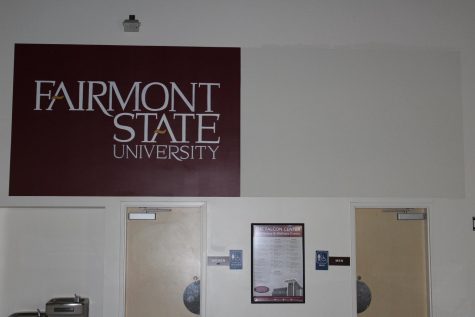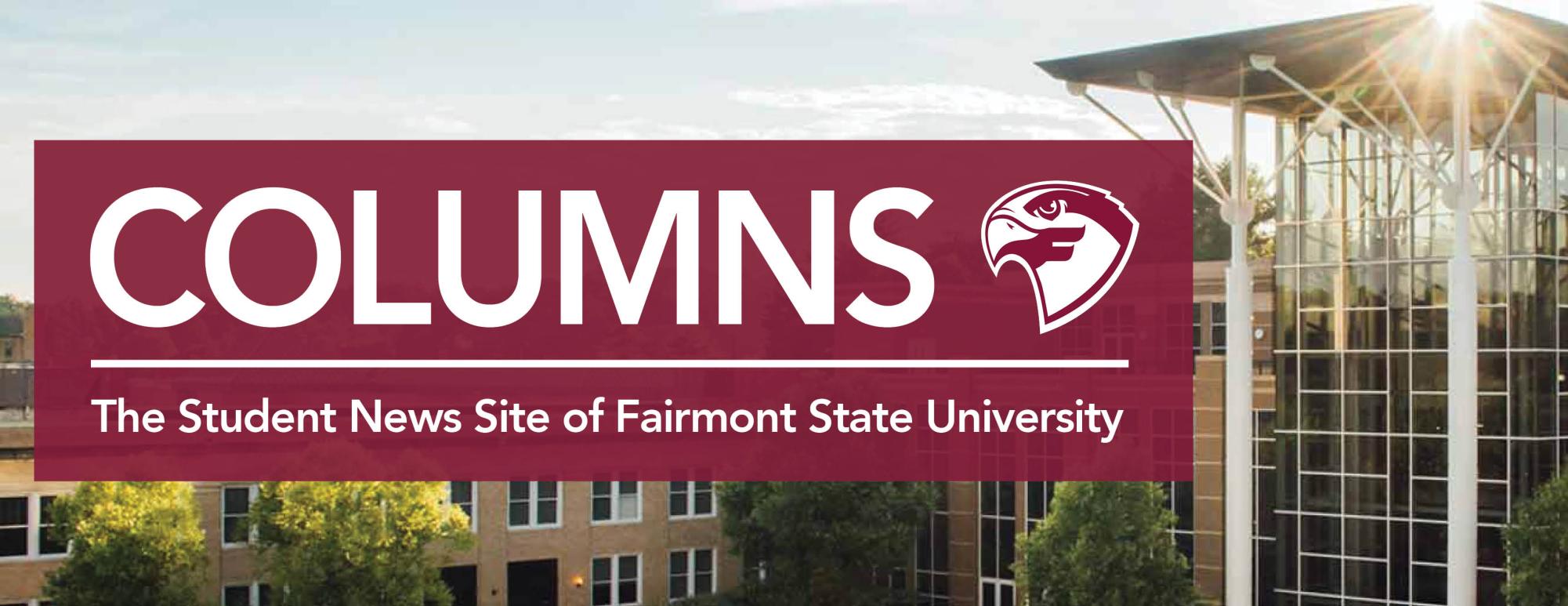As Fairmont-Pierpont move toward “amicable separation,” FSU Library hours change
The community college has shared a campus with Fairmont State for 45 years. Now, with changes that are effecting both sets of students, the relationship could be nearing further separation.
As of this fall semester, the Ruth Ann Musick Library hours have changed.

Although many returning students have become accustomed to the library’s late hours, it’s no longer open until 2 a.m.. Instead, the library closes at 10 p.m. Monday-Thursday and is closed all day Saturday. In addition to those changes, the library opens at 8 a.m. rather than 7 a.m. and is open two hours earlier on Sundays at noon.
To many students, the new library hours are not ideal. Graphic design majors, Abby Hartley and Kascie Kennedy, find the new library hours “inconvenient.” Hartley and Kennedy each use an Adobe program for their graphic design work. Given that the program is free to use in the library and otherwise requires a monthly fee, graphic design majors rely on the library for an affordable source of software.
English major, Cierra Satterfield, commented on the new hours stating, “I feel like that’s really kind of early because I work at a restaurant and I don’t get off until midnight or 1 a.m.”
Other students are indifferent to the new hours. In fact, aviation major Seth West stated, “Personally, I wasn’t in the library much last year anyway.”
Richard Harvey, Provost and Vice President of Academic Affairs and Sharon Mazure, Interim Director of Library Services, affirmed that gate count numbers were “very low” in the library after 10 p.m. and on Saturdays. Harvey also claimed that the new library hours are “all budget driven.”
According to Harvey, Pierpont Community and Technical College officially withdrew funding from library services as of July 1st, 2019. Harvey stated, “In response to budget cuts, we needed to reduce our hours.”
For Pierpont students, this means a new location for library services: online. Lyla Grandstaff, Vice President of Enrollment Services for Pierpont commented on the transition to an online library stating, “Because we are a community college and we service 13 counties, all of our students need to have access to a library, so we went to an online service that the community and technical system provided for us.”
Michael Waide, Interim Provost & Vice President of Academic Affairs for Pierpont, agreed stating, “Our decision was to increase access for all Pierpont students to library services beyond our Locust Avenue campus.”Other locations in the Pierpont’s 13-county service region that offer courses are the Braxton County Center in Flatwoods, WV, the Pierpont Center in Morgantown, WV and the Lewis County Center in Weston, WV.
Harvey confirmed that the changes affect Pierpont students’ access to the Ruth Ann Musick Library’s resources. Pierpont students can no longer check out books, use the library database, reserve a study room or use the reference desk, regardless of their residential status on the Locust Avenue campus.
It is important to note that Library Associate, Debbie Renick stated, “Pierpont students can get a public borrower’s card and check out up to three items at a time.” Renick’s statement implies that Pierpont students are still welcome in the library, but their use is limited.

Fairmont State University has shared it’s campus with the community college since 1974. At that time, the institution was called Fairmont State Community & Technical College and was considered a component of Fairmont State College. The school was renamed Pierpont Community & Technical College, a division of Fairmont State University, in 2006.
It wasn’t until August, 2008 that state law HB 3215 required separation of Pierpont Community & Technical College from Fairmont State University and provided the school with a separate Board of Governors. Even though the two schools officially separated in 2008-09, they’ve continued to share the Locust Avenue campus and its resources. These resources traditionally included housing, academic buildings, recreation, food and library services.
Another change Pierpont students should be aware of is the location of tutoring services. According to Waide, tutoring services for Pierpont students are no longer in the library. Instead, they are provided on the second floor of Jaynes Hall “under the directory of Jeffrey Null.” Additionally, Waide stated Pierpont now offers access to “24-hour, seven-day-a-week tutoring services through Tutor.com.”
Amid these changes, Pierpont students have reported technical difficulties. Nokomis Evans, second semester Pierpont student, confirmed that early this semester an ID card malfunctioned at the gym/recreation area in the Falcon Center. Though the problem with Evans’ ID card has since been resolved, it was nonetheless a hassle. Later, Evans stated, “I want to transfer to Fairmont State University next year because I want to stay on campus.” This statement points to a concern for the possibility of future implications related to these changes.
Grandstaff stated, “We were in the process of transferring our database and IDs are now being validated, there shouldn’t be any problems with students using them in the Falcon Center if they have that charge on their account so they can continue to use that service.”
Though unconfirmed, some have claimed that Pierpont students are not able to access the Wi-Fi network “student” and are forced to log onto “guest.”
Grandstaff encourages Pierpont students to go to student services in Hardway Hall “if they have any issues and then we will address them.”
Harvey asked that students, including members of the Student Government Association, bring any concerns regarding the new library hours to him.

Fairmont State University President, Mirta Martin, provided the following statement regarding the current relationship between the two schools:
“Fairmont State University and Pierpont Community and Technical College have been two separate and sovereign institutions since 2009. They remain separate sovereign institutions. At this time, Fairmont State and Pierpont are working toward solidifying an amicable separation of administrative functions and locations, which is an ongoing process.”







